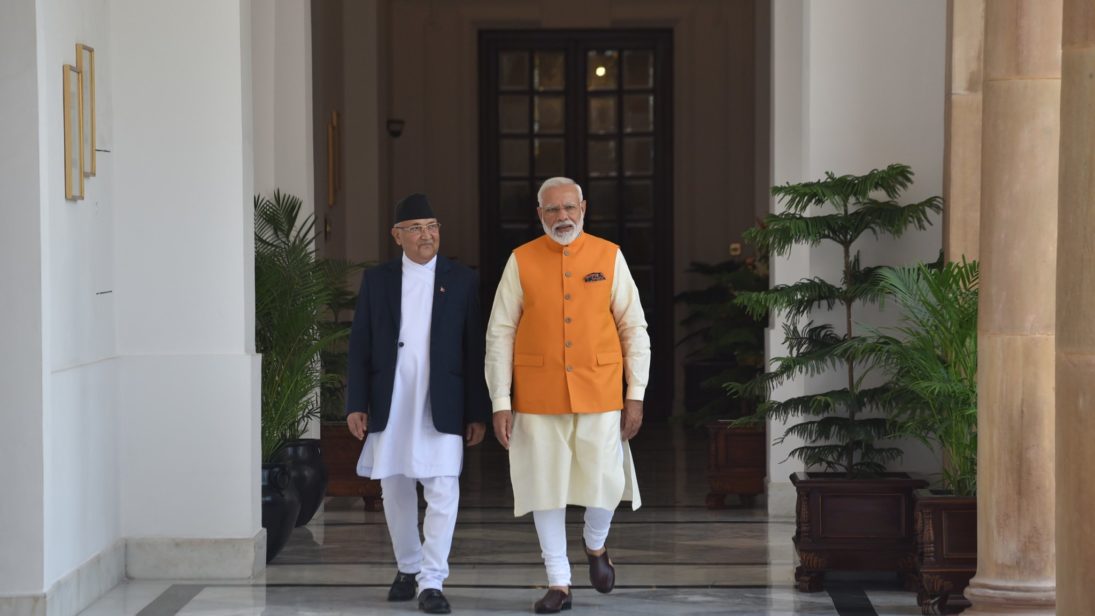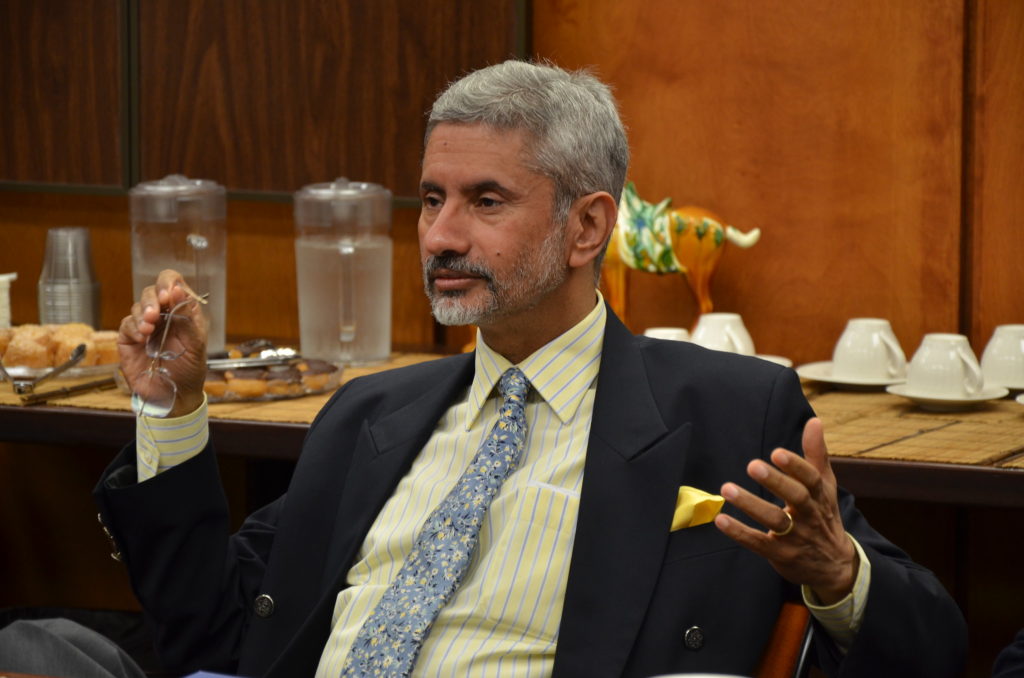
When Indian Prime Minister Narendra Modi began his second term in May, there was a sense of expectation in Kathmandu that the Nepal-India relationship would take a positive turn with new vigor. However, it remains unclear what Modi’s broader South Asia policy in his second term, as outlined and led by the newly-appointed Indian Minister of External Affairs Dr. S. Jaishankar, has in store for Nepal and India. Persistent issues in the bilateral relationship mean that the potential for bilateral hiccups remains high. The trajectory of the Nepal-India relationship in Modi’s second term will be determined by India’s responses to the underlying irritants in the bilateral relationship, such as divergent outlooks on issues ranging from regional institutions to China’s role in South Asia.
Modi’sFirst Term
When Narendra Modi was elected in May 2014, he took proactive measures to elevate the Nepal-India relationship. For example, from 1997 to 2014, no Indian prime minister visited Nepal, but almost all Nepali prime ministers began foreign state visits with India. In 2014 alone, Modi visited Kathmandu twice, and in his five-year tenure, he visited Nepal four times. In Nepal, these visits were viewed as significant trust-building efforts designed to build relations at the political level. After a hiatus of 22 years, the meeting of Nepal-India Joint commission, a mechanism responsible for overseeing bilateral issues, took place.
Meanwhile, Kathmandu was in the process of drafting the final chapter of its constitution. Nepali leaders—typically wary of Indian interference in internal political affairs—felt optimistic that Modi would not dictate Nepal’s constitution drafting process. However, when Nepal drafted a new constitution, India imposed a border blockade to press Nepali leaders to address the demands of Madhesi-based parties (regional parties active in the southern belt bordering India). These tensions continued for four months, marking a low point in India and Nepal’s recent bilateral relations.
Relations did not improve once the blockade was removed. In 2016, for example, Nepal cancelled its president’s planned visit last minute; the then Communist Party of Nepal (Unified Marxist-Leninist) blamed India for toppling the K.P. Sharma Oli-led government. Additionally, issues have surfaced around the Nepal-India Eminent Persons’ Group (EPG) report, in which Kathmandu hopes to amend several treaties and conventions. Nepal hopes to amend these unfair treaties and conventions in order to curb the ballooning trade imbalance between the two countries. Taking all of these tensions into account, both sides postponed major bilateral efforts until after India’s elections.

TheUnderlying Issues
Three unresolved bilateralissues are poised to inhibit the progression of India and Nepal’s bilateralrelationship throughout Modi’s second term.
First, there remain underlying tensions around India and Nepal’s views of South Asia’s regional institutions broadly. In 2018, Nepal suddenly pulled out of the joint Bay of Bengal Initiative for Multi-Sectoral Technical and Economic Cooperation (BIMSTEC) military drills in Pune, India, revealing some tension between Nepal and India over New Delhi’s aims of upholding BIMSTEC as an alternative to the South Asian Association for Regional Cooperation (SAARC). Soon after assuming the position of Minister of External Affairs, S. Jaishankar clearly indicated that India wants to revive BIMSTEC—which excludes Pakistan—over SAARC. As the current chair and founding member of SAARC, Nepal regards the revival of SAARC as its moral responsibility and the convening of the 19th SAARC summit as the starting point of the group’s revival. Yet India has time and again said that regional atmosphere is not conducive to holding a SAARC summit. As a result, the issue of SAARC will continue plague bilateral relations between Nepal and India.
Of similar importance is the Nepal-India EPG report. India and Nepal formed the bilateral group three years ago to suggest methods of redefining bilateral issues. The report, which the group prepared in 2018, has yet to be submitted to Prime Minister Modi. In the initial months, India side refused to accept the report citing some objectionable provisions of report which were corrected. Once the concerns of Indian side were addressed, Indian side cited the election result and assured Nepal that it would submit report once the election is over. In the report, however, Nepali experts proposed reviewing all bilateral treaties and agreements between the two countries, including amending the 1950 Treaty of Peace and Friendship—the bedrock of the current India-Nepal bilateral relationship. Because the ruling Nepali Communist Party’s election manifesto pledged “to revise\amend unequal treaties” with India, there is significant pressure on Oli to deliver an amendment to the treaty. If Modi refuses to accept the report, however, this may cause friction in the India-Nepal relationship, as the government in Kathmandu holds the view that the EPG report will help to reset bilateral relations in the changed context.
Finally, Nepal and India’s relations with great powers have come to affect their bilateral relationship. After promulgating its 2015 constitution, Nepal has been more assertive in conducting policy without any foreign interference. At the moment, however, Kathmandu is confronting two opposing visions: China’s Belt and Road Initiative (BRI) and the U.S. Free and Open Indo-Pacific (FOIP) strategy, and faces a difficult task of delicately balancing these two opposing views. Both promise Nepal greater prosperity but exist in opposition to one another.
Kathmandu is confronting two opposing visions: China’s Belt and Road Initiative and the U.S. Free and Open Indo-Pacific strategy, and faces a difficult task of delicately balancing these two opposing views. Both promise Nepal greater prosperity but exist in opposition to one another.
Nepal faces a particular dilemma over its economic ties with Beijing. While China has majorly stepped up its presence in the country as Nepal’s single-largest source of foreign direct investment, the United States has also recently demonstrated a desire to elevate Nepal under its FOIP strategy against China. India and the United States maintain reservations about Chinese investment in large-scale infrastructure projects and growing influence in South Asia, including Nepal. Consequently, Nepal has so far adopted a cautious approach while preferring projects under BRI. Kathmandu must chart a course between its two neighbors as it engages with Beijing on BRI to avoid friction in the India-Nepal relationship.
Kathmandu has also recently been met with the possibility of a closer defense relationship with the United States. The U.S. Indo-Pacific strategy document, unveiled in June, stated that Washington would like a deeper defense ties with Nepal “focused on HA/DR, peacekeeping operations, defense professionalization, ground force capacity, and counterterrorism.” Though India may be coming together with the United States in the Indo-Pacific, New Delhi is likely to be hesitant of a warmer Nepal-U.S. defense relationship given the unique relationship between the Indian and Nepali armies (India has a long history of recruiting the Gorkha regiments of the Indian army from the hill districts of Nepal). Nepal will have to be mindful of its relationship with India if it begins cultivating and deepening defense ties with the United States.
MovingForward
For India’s part, it should recognize that only a strong and prosperous Nepal can address India’s genuine security interests in Nepal, such as counterfeit currency and the chances of terrorist groups misusing the border. As a neighbor, India should be generous in addressing concerns raised by Nepal, instead of viewing Nepal as only a potential sphere of influence. Of late, the degree of India’s interference in Nepal’s political affairs has seemed to decrease, positively contributing to bilateral relations. Continuing a policy of noninterference will foster an environment more conducive to solving other bilateral issues.
For Nepal’s part, the government should resolve differences with India exclusively through diplomatic channels, rather than taking those issues to the street in order to take political benefits.
For Nepal’s part, the government should resolve differences with India exclusively through diplomatic channels, rather than taking those issues to the street in order to take political benefits. By taking bilateral issues to the people for political gain, Nepal’s leaders may have a harder time reaching compromise at the diplomatic table later on, as public opinion may have already hardened against India. Finally, Nepal has been—and should continue to be—cautious on how to tackle the two conflicting visions of BRI and FOIP. Both India and Nepal should work hard to enhance their bilateral relations independently of BRI and FOIP. The countries should instead cooperate on resolving simple issues such as the inundation of Nepali land due to Indian construction along the border, trade bottlenecks, and minor border disputes.
Both Nepal and India are close neighbors and can therefore not afford to strain the relationship as they have in the past. Nepal, coming out of chronic political instability, is solely focused on its economic development. The time is now for the second Modi government to contribute to Nepal’s journey toward economic prosperity.
***
Image 1: MEAPhotogallery via Flickr
Image 2: East-West Center via Flickr


